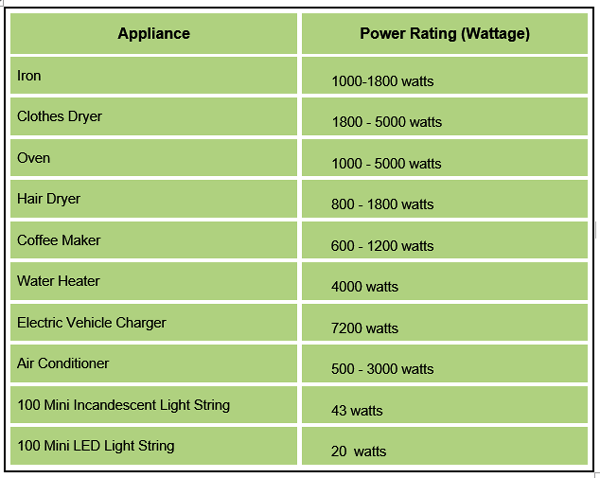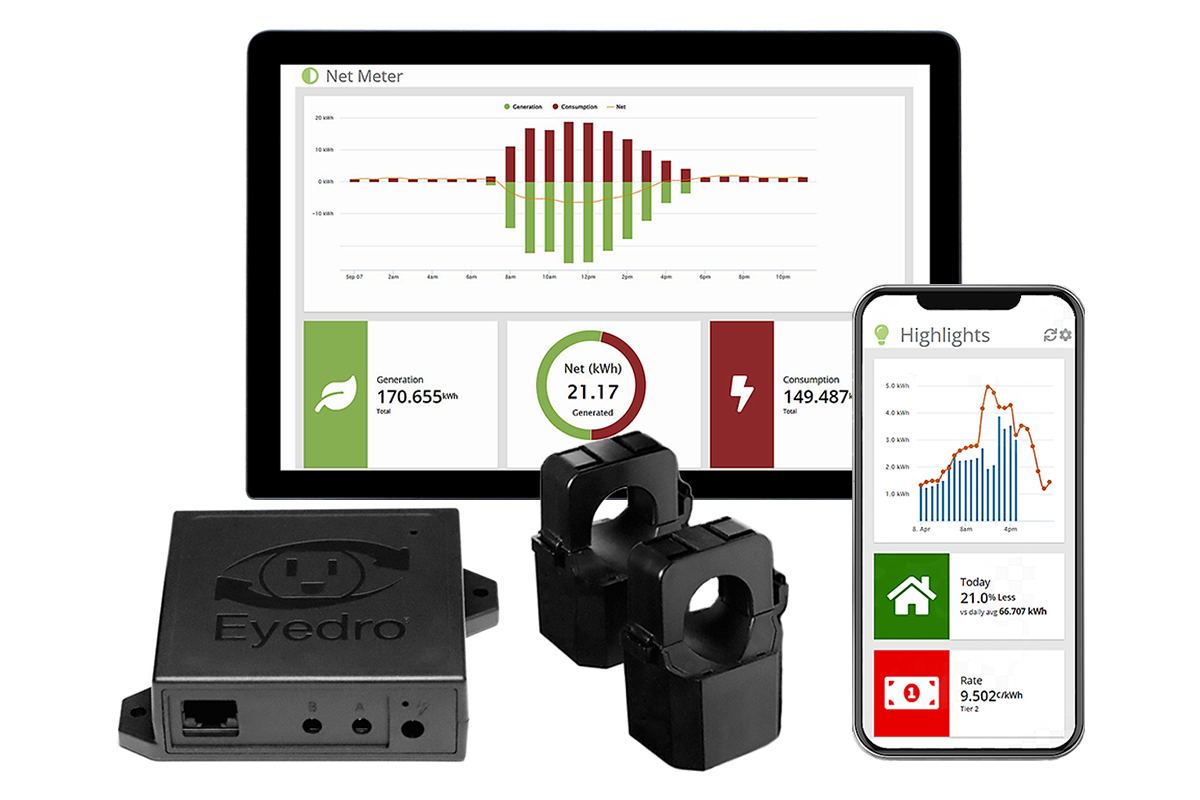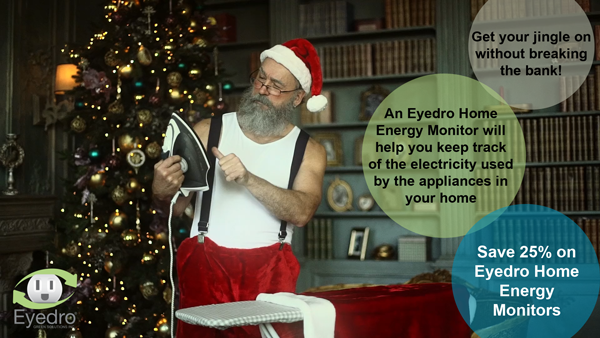
by Stacey McCuaig | Dec 16, 2021 | Blog, Electricity Bill, Energy Reduction
Save energy at home with an Eyedro Home Energy monitor. Take the mystery out of your energy usage with the comprehensive suite of reporting tools in the MyEyedro cloud software. MyEyedro access is included with the purchase of your Eyedro Home Energy monitor with no subscription fees.
MyEyedro offers a range of insightful options to help you manage your electricity usage. Automated reports can be sent to your email and you can also share reports with additional users. Instantaneous live data will let you know when your energy hogs are running (think clothes dryer, oven, electric heaters), so you can manage the best time for operating these appliances based on your utility times and rates. Real-time data lets you view your live usage as you turn devices off and on. Bills data customized with common utility rate structures are viewable with a 12 month window. Historical data will allow you to track your usage trends over time as you move through the months and seasons and year to year.
Print on demand reports or download your raw data to Excel. MyEyedro offers a myriad of ways for you to view your energy data.
MyEyedro cloud data is integrated with Amazon Alexa, Samsung SmartThings and Google Assistant for added smart home functionality.
Typical Power Ratings of Your Home Appliances
Phone, internet, water, and energy bills, they all add up. Determining the right mix of service, price, and convenience can help you save money on your utility bills. Eyedro’s real-time energy monitoring can help you make a positive impact on the planet by reducing your home electricity usage. Together, we can combat climate change and create a sustainable future.
Energy Monitoring Made Easy
The Perfect Gift for the Homeowner
Give them the gift of year-round energy savings because nobody likes to pay more for electricity than they have to, not even Santa!
EYEDRO-HOME Energy & Solar Monitor
Connect by WiFi or Ethernet

by Stacey McCuaig | Oct 26, 2018 | Blog, Customer Success Stories, Electricity Bill, Energy Reduction, Eyedro Case Study
Canadian Tire Saves: Eyedro Retail Case Study

Electricity, Gas and Water for Retail Operations – One Dashboard!
PROFILE:
“After using Eyedro’s Energy Monitor we immediately identified key areas of the retail operations where we could start saving money. By following our power usage and cost profile we can plan our monthly operating costs accordingly. The monitors installed paid for themselves within months.”
Michael G. – Canadian Tire Store, Alberta Canada
- Located in the City of Red Deer
- 94,000 square feet of Retail
- 24 circuits monitored, Water and Gas mains
- 18% saved on Energy Budget in 10 months
- Water and Gas monitors for bill reconciliation
OBJECTIVES:
To provide a detailed profile of the energy use of Retail Operations in each department throughout the store and identify energy saving opportunities.
Meet energy budget reduction targets and provide Computerized Energy Monitoring.
The cloud-based solution in real time identifies inefficiencies in daily and seasonal operations.
SOLUTION:
The Eyedro Green Solutions ™ Energy Monitoring System was installed on every breaker with a large or critical load for monitoring the energy by retail department and looking for energy waste in daily operations.
The store can now monitor all types of Energy in one simple dashboard while at the same time compare readings with the Utility bills. Advanced Alerts will allow them to shed load when needed to avoid stepping up to a higher tariff band or when equipment, such as parking lot lighting, was left on after hours from the convenience of their phone.

Electricity, Water and Gas all on One Dashboard!
Shop Eyedro for Business.

by Tim Osland | Apr 20, 2018 | Blog, Electricity Bill, Energy Reduction, green ideas, hydro bill
Phantom power: your home’s devices and appliances, when plugged in, continue to draw power even when they are off
It is called “phantom” or “standby” power, and it could account for up to 10 per cent of your home’s energy use. The average home has 25 or more electronic devices that use phantom power, costing approximately $200 or more a year in electricity. (in a 2,000 sq ft home)
Track your phantom power with the MyEyedro Phantom Energy plugin. The MyEyedro software provides you with a 24 hour window of your phantom power usage.
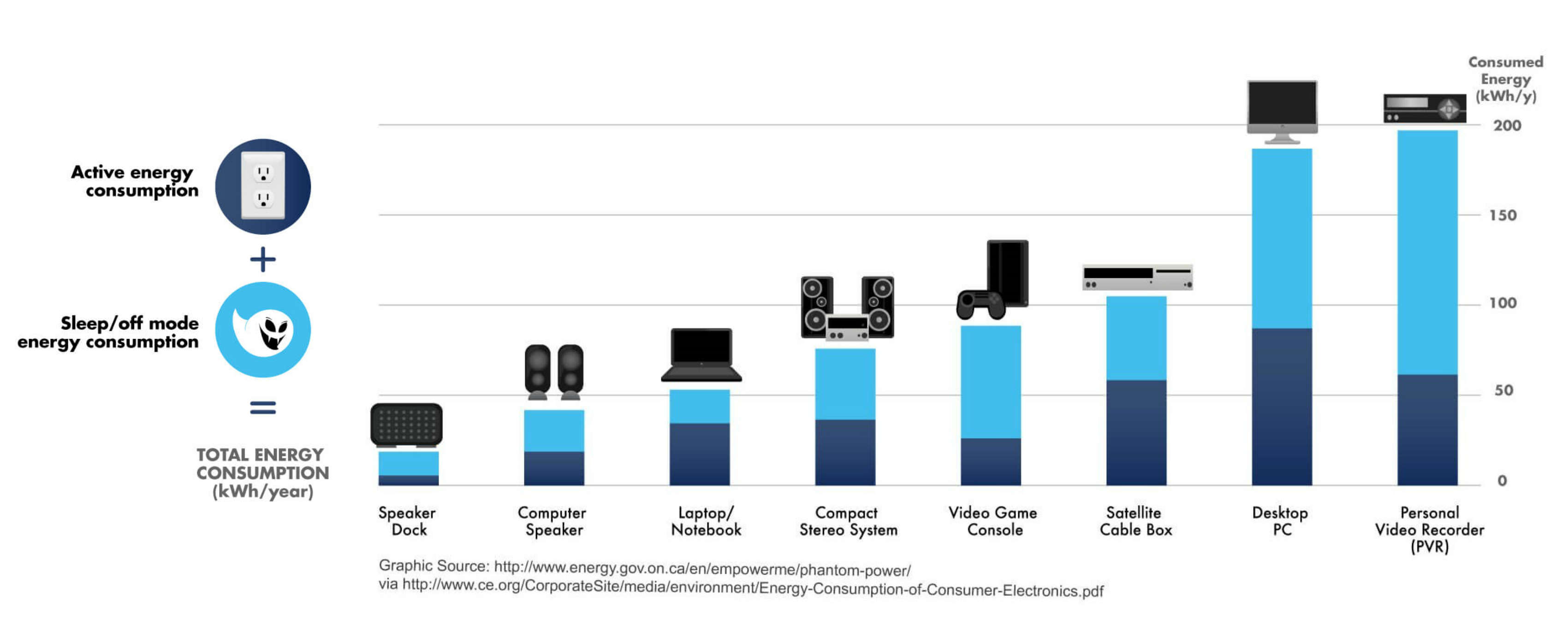
How Do I Identify the “Phantoms”?
- Appliances with remote controls (TV, Video and Audio Equipment)
- Appliances with continuous digital displays (Clock on Stove, Coffee Maker)
- Appliances with rechargeable batteries (Cordless Phones, Laptops)
- Appliances with external power supplies (Cell Phone Chargers, Electronics)
How Do I Get Rid of the “Phantoms”?
- Plug devices into power strips – and turn them off
- Unplug appliances when not in use
- Use clocks powered by rechargeable batteries
When buying new appliances, choose appliances with low standby power and look for the Energy Star symbol
For more information on Home Energy Monitoring please visit https://eyedro.com/
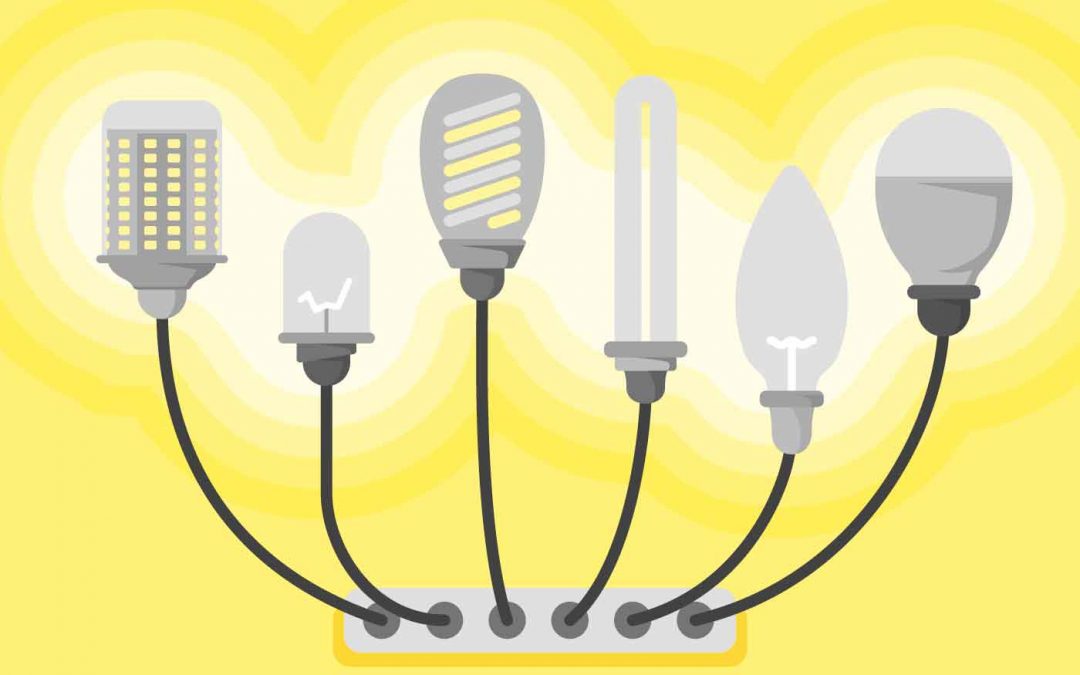
by Stacey McCuaig | Jul 28, 2017 | Blog, Electricity Bill, Energy Reduction, green ideas, hydro bill
Big Savings with LED Lighting
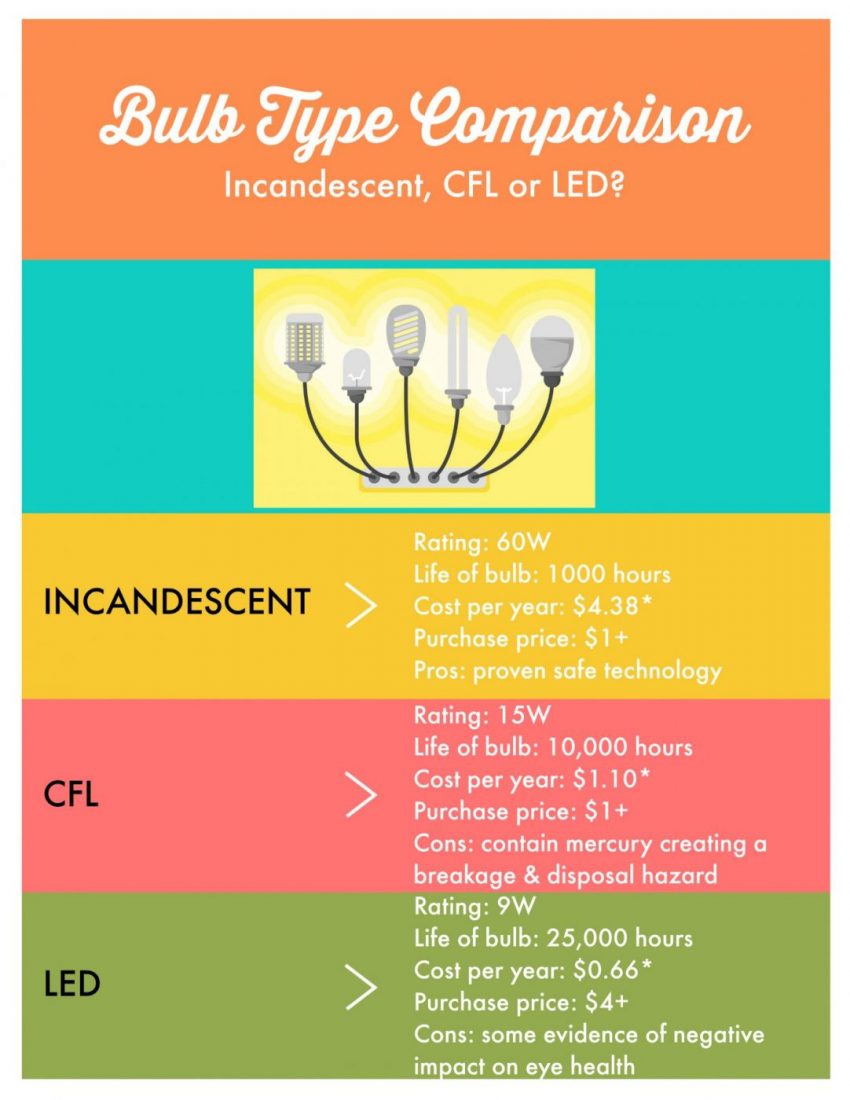
*Based on 2 hours per day @ 0.10/kWh
Which Type of Light Bulbs Should you Choose?
In these days of rising electricity prices it may be time for a whole home light bulb retrofit. With a quick look at the above infographic it quickly becomes apparent that significant savings are to be had by swapping out incandescent bulbs for LED lighting.
Incandescent bulbs are inexpensive to purchase but tremendously inefficient as they dissipate most of the energy they consume as heat.
The cost of running one 60 watt incandescent bulb for 2 hours per day at 10 cents/kWh, would cost $4.38 per year. The 15 watt compact fluorescent equivalent would cost $1.10 per year and the LED version comparable to the 60 watt incandescent would only cost $0.66! Now multiply that by the average number of bulbs in a home.
The average number of light bulbs in a home is 24 according to Natural Resources Canada’s Office of Energy Efficiency 2007 statistics. When you multiply the yearly dollar figures of the incandescent and LED bulb by 24 that’s when the savings opportunities really become obvious: $105.12 vs. $15.84!
While initially LED bulbs were quite expensive to purchase, they have in recent years come down in price and are now very affordable.
The advantages of LED lighting are clear:
- Extremely energy efficient compared to traditional light bulbs
- No toxic mercury risk like CFL
- Affordable
- Very long life if you purchase good quality bulbs (this may or may not apply to dollar store finds – caveat emptor)
Try a little experiment! Install each type of bulb one by one in a lamp and check how much power is being consumed using your Eyedro Real-Time Electricity Monitor. Saving electricity can be fun, saving money even better.
Ready to dig a little deeper into your energy usage?

by Stacey McCuaig | Jan 20, 2017 | Blog, Electricity Bill, Energy Reduction, hydro bill, MyEyedro
Prompted by popular “demand” for a means to capture electricity demand, Eyedro is pleased to announce the addition of the new Portfolio plugin to our MyEyedro electricity monitoring platform.
The Portfolio view allows the MyEyedro user to determine 30 Day Peak Demand selectable by date, Instantaneous Peak Demand, 24 Hour and 30 Day Consumption.
In order to activate the Portfolio plugin the user’s MyEyedro account must have at least 2 display groups. In the case where a user has only one Eyedro device, a duplicate display group can be created.
For more information on the Portfolio plugin see page 58 of the MyEyedro User Guide.
Electricity Demand Explained
Electricity Demand is the maximum amount of electricity being used at any given point in time. Demand fluctuates throughout the day. For example, in the morning as people get up and get ready for work, take showers, run their cappuccino machines, hair dryers or waffle makers, electricity demand increases. In the early evening there is a second period of peak demand as people arrive home from work, turn on lights and appliances, cook dinner, fire up computers, etc. The greater the electricity demand, the greater the strain on the electrical grid to supply that demand, which is why many utilities will charge the consumer more during times of peak demand (Time-of-Use electricity rates). Time-of-Use rates are intended to take some of the strain off the grid by encouraging conservation at times of peak demand.
30 Day Consumption View:
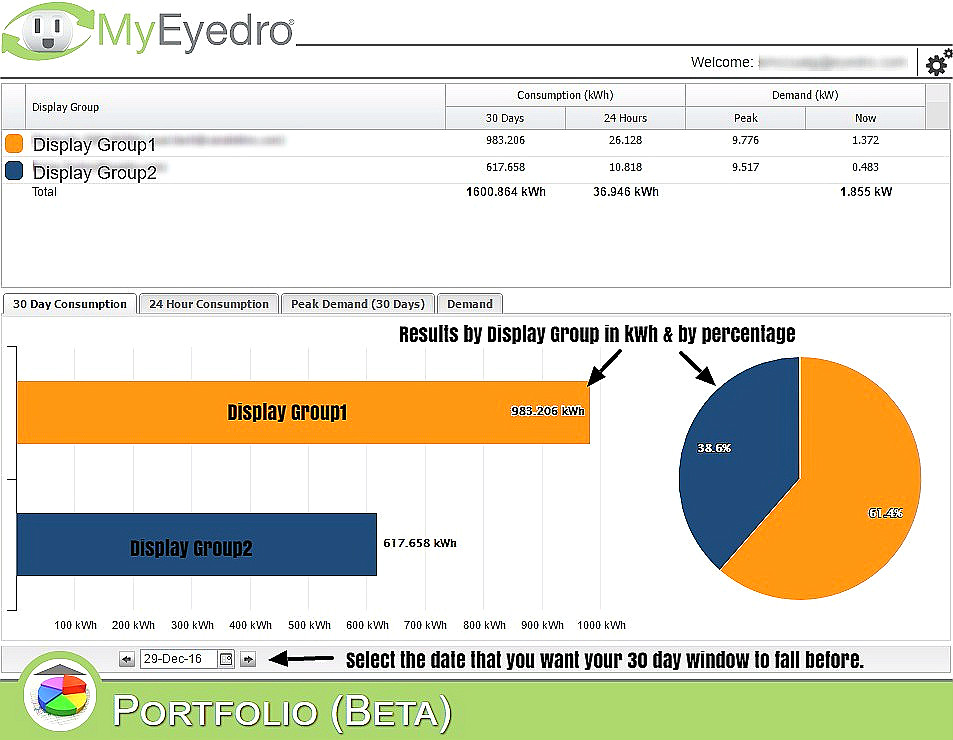
30 Day electricity Consumption Data
24 Hour Consumption View:
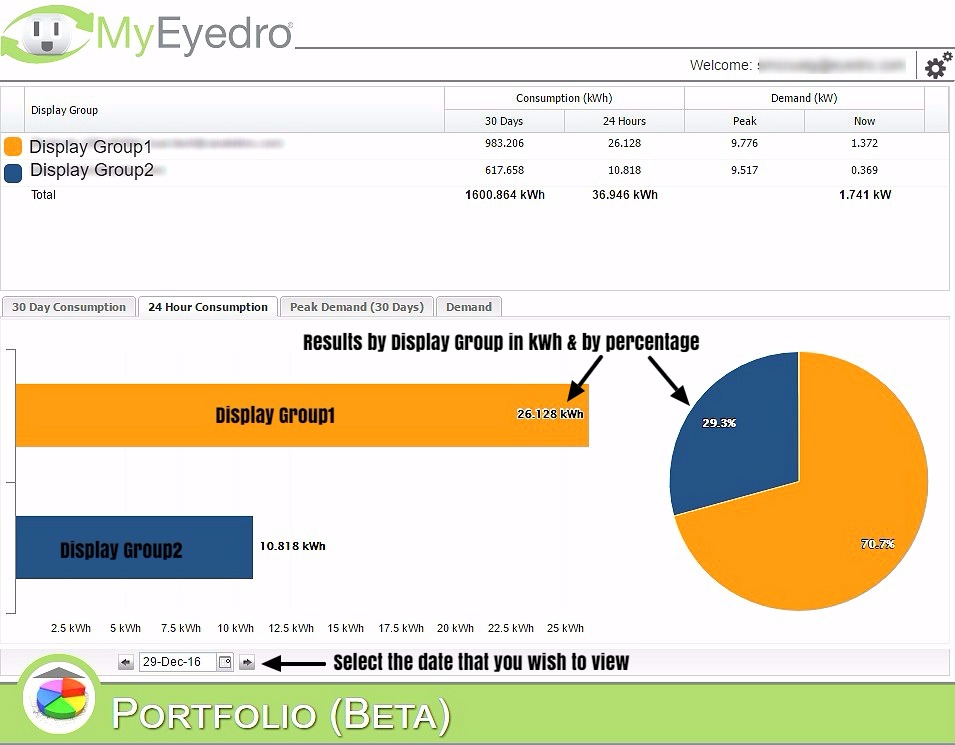
24 Hour Electricity Consumption Data
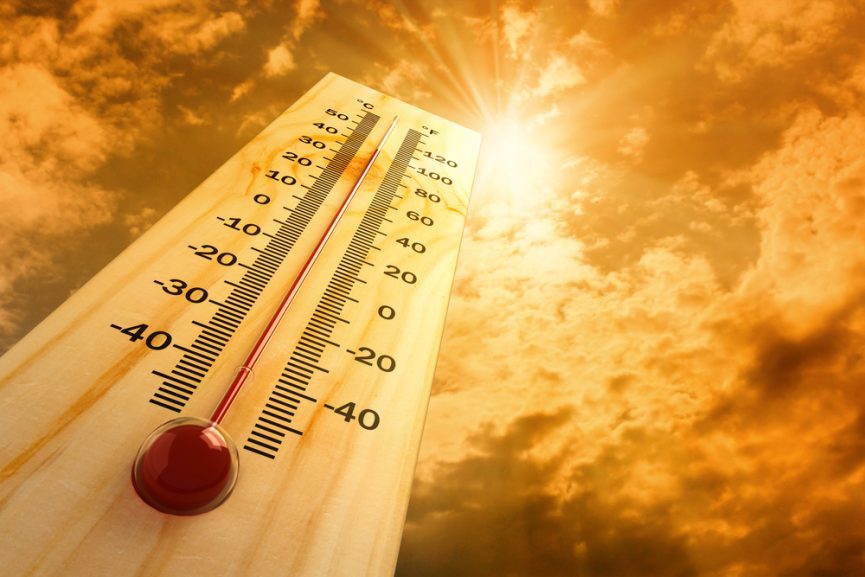
by Stacey McCuaig | Oct 6, 2016 | Blog, Electricity Bill, Energy Reduction
Let’s talk about energy savings. Those who live in Northern states immediately think of home heating costs in the winter. We may even forget (temporarily) how expensive it is to remove heat from your home in the summer.
In fact, most of the United States can be considered “hot” at some point during the year. Alaska, for example, might even see temperatures in the 90’s… as early as May!
It’s a serious matter, but not an insurmountable one…
Although we don’t all need to worry too much about freezing in the winter, we all need to understand the cost of keeping cool in the summer.
Home cooling accounts for 6 percent of the average home’s energy use. It’s important to be aware that this is an average. It’s a bit deceptive in that, it doesn’t reveal the sharp rise in costs over the hot summer months.
Defining Energy… More Than a Mental Exercise:
Let’s define energy as “anything that involves a change in the position or temperature of something you own”. This matters, because a clear definition helps expose things we would otherwise overlook. For example:
In the Summer:
- The Sun’s energy:
– Striking your kitchen tiles adds heat to the room
– Using air conditioning to remove that heat comes at a cost (the effect being a benefit in the winter) - Obstructions in HVAC conduits can add to energy consumption with air handling equipment
These are only a few examples of how energy can be wasted. One can occupy every moment of their free time chasing down ways to conserve energy, and still find a growing list of unfinished tasks. Having said that, what is a rational plan of action? How does one save energy, money, and maybe even the environment with a reasonable amount of effort?
Actually, it’s easier than it sounds. Here are a few opportunities to conserve energy during the hottest months of the year:
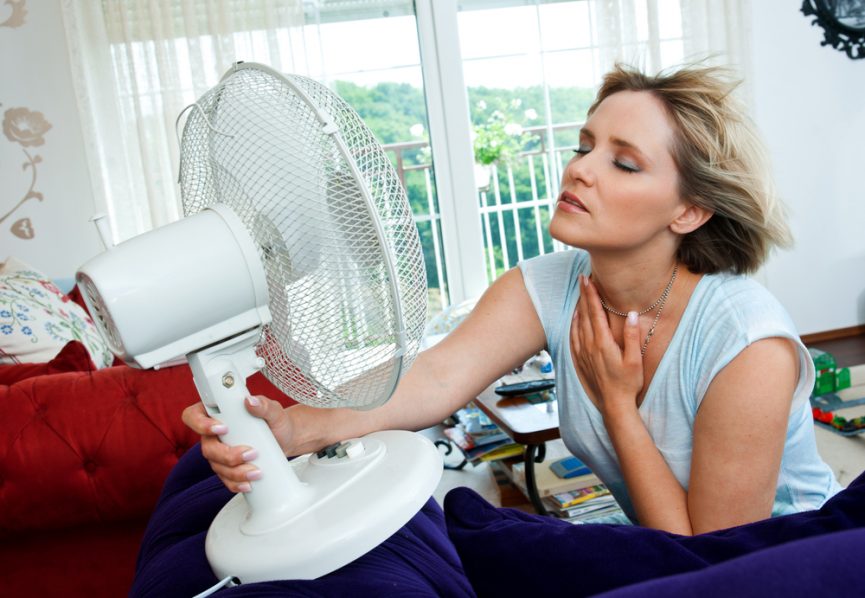
Conserving Electricity:
You may already be conserving electricity. Turning off lights in empty rooms, switching to LED lighting, and putting your computer in sleep mode when you leave your desk are common examples. Conserving electricity can be taken further. Here are a few more simple ideas to keep cool and conserve energy during the summer:
Being Mindful, (in moderation): Ask yourself how cool your house really needs to be. The approach to using programmable thermostats to cycle the furnace in the winter can also be used to do the same thing with cooling in the summer.
This is especially effective while you’re away on a trip. Try shutting it off altogether. It’s not like your sofa’s going to care if it’s 100 degrees in there. The only time you should reconsider is when humidity is an issue. A (mostly good) side effect of air conditioning is that it removes moisture from the air. Assess your situation and determine if the dehumidifier can do the job.
Window-mounted Air Conditioners: Focusing on only a portion of the house, presumably the part where you spend most of your time. It allows you to reduce energy consumption with some flexibility. – especially when you spend most of your time in one or two rooms of the house. The reason may simply be that you work from home. The office is where you spend the vast majority of your time during customary work hours.
Fans: Of course, you can ditch the air conditioning altogether and go with a fan. These consume a lot less energy than an air conditioner – mostly because you’re not actually removing heat from the room. Even when it’s 80 degrees, your body’s core temperature is higher. When air flows over your skin, you’re employing the principle of forced convection to carry heat away from your body. You’re also using the evaporation of moisture (perspiration) to remove heat from your body.
Be aware of the downside. If it’s really humid, or the temperatures are especially high (approaching 100 degrees), these processes are much less effective. In those situations, you could even put yourself in a wind tunnel without any satisfaction. Use temperature and relative humidity to make the best choices. If you’re not the scientific type, that’s OK too. You’ll know when a fan’s not effective. And now, you’ll know why!
Managing Heat Energy:
Heat energy can become trapped in the home, to the point that the inside of your house can be warmer than the air outside. It’s pretty common at dusk, when the temperature outside drops and your house didn’t drop as quickly.
In cases where you’re trying to match the temperature outside, you can expel heat from your home with an exhaust fan. Heat which is trapped in the upper floors can be sent outside while drawing cooler air from the lower floors. Remember to make a path for the airflow, with open windows downstairs and closed windows on the top floor with the fan. The only path leading outside your home should be through the fan.
Managing Appliances:
Some simple maintenance can go a long way toward reducing wear and tear on you appliances. It can also affect energy consumption and even reduce safety hazards. For example, checking your dryer exhaust for lint may reveal a partially clogged duct. Clearing the lint will improve efficiency and lower the risk of fire.
Your refrigerator is another example. The two main parts which work to transfers heat from the inside of your refrigerator to the outside are coils. They function in the same way as a radiator.
The evaporator: This is the part that becomes cold and absorbs heat from inside the refrigerator. It can collect ice which, in turn, insulates the coils, preventing it from absorbing heat. Be mindful about ice accumulating on this coil and remove it when it occurs.
The Condenser: This is the part that looks like a radiator. It delivers heat from inside the refrigerator by concentrating and transferring it to the surrounding air in your kitchen. They can accumulate dust, which makes heat transfer inefficient. It’s worthwhile to check it periodically and remove dust which accumulates on and around it.
Following these simple tips will start you on a path to a healthier, less expensive, and environmentally friendly lifestyle. Stay cool, and good luck!


